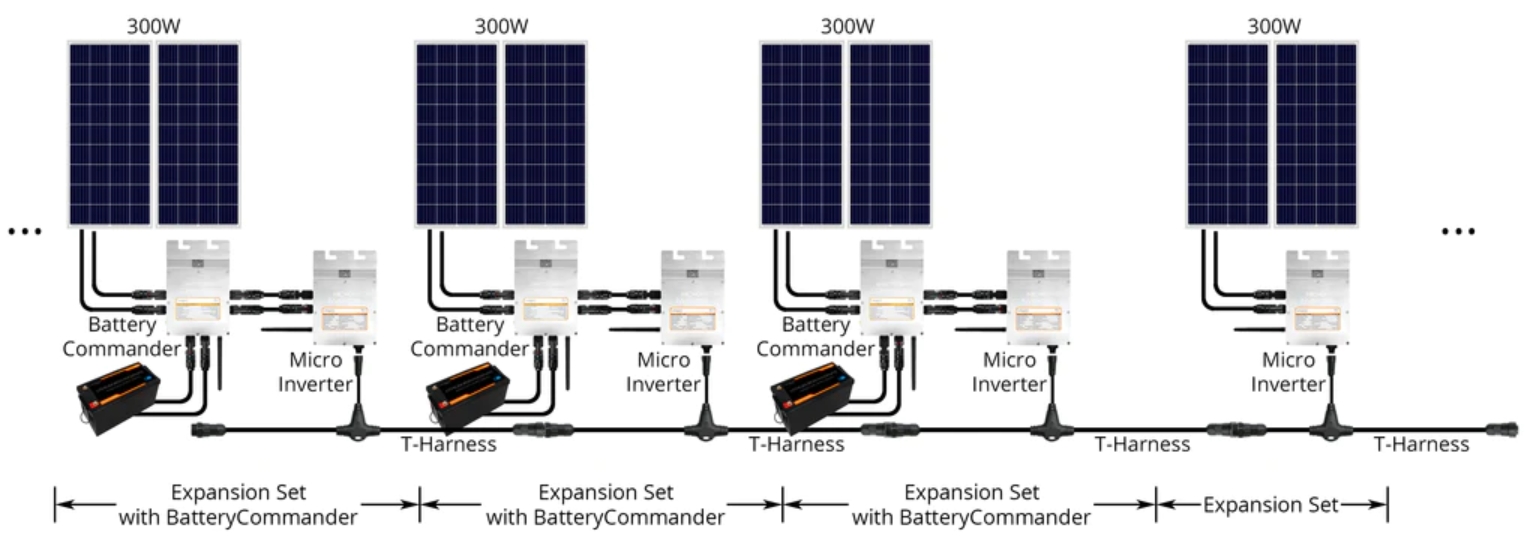Introduction
Micro inverters are becoming increasingly popular in solar energy systems due to their ability to optimize the performance of individual photovoltaic panels. Proper installation of micro inverters is crucial for maximizing their efficiency and longevity. This article provides a comprehensive guide on the best practices for installing micro inverters, ensuring that your solar energy system operates at peak performance for many years.
Why Choose Micro Inverters?
Micro inverters offer several advantages over traditional string inverters, including improved energy harvest, enhanced system reliability, and panel-level monitoring. By converting direct current (DC) to alternating current (AC) at each panel, micro inverters mitigate the impact of shading, dirt, and panel mismatch, leading to higher overall system efficiency.

List: Benefits of Micro Inverters
- Increased Energy Harvest: Optimizes the performance of each photovoltaic panel independently.
- Enhanced System Reliability: Reduces the risk of system-wide failures.
- Panel-Level Monitoring: Provides detailed insights into the performance of each panel.
- Simplified Maintenance: Easier to identify and address issues at the panel level.
- Flexibility in Design: Suitable for complex roof layouts and varying panel orientations.
Pre-Installation Considerations
Before installing micro inverters, it is essential to conduct a thorough assessment of the site and system requirements. This includes evaluating the roof structure, solar potential, and electrical infrastructure.
List: Pre-Installation Steps
- Site Assessment: Evaluate the roof condition, orientation, and shading.
- Solar Potential Analysis: Determine the optimal placement for maximum sunlight exposure.
- Electrical Infrastructure Check: Ensure the existing electrical system can support the new installation.
- Permitting and Approvals: Obtain necessary permits and approvals from local authorities.
Choosing the Right Micro Inverters
Selecting the appropriate micro inverters for your solar energy system is crucial. Factors to consider include compatibility with photovoltaic panels, efficiency ratings, and warranty terms.
Table 1: Key Factors in Choosing Micro Inverters
| Factor | Description |
|---|---|
| Compatibility | Ensure compatibility with the chosen photovoltaic panels |
| Efficiency | Look for high-efficiency models to maximize energy harvest |
| Warranty | Consider inverters with long warranty periods for better reliability |
| Monitoring Capabilities | Choose inverters with advanced monitoring features |
| Cost | Balance between cost and performance based on budget and system size |
Installation Best Practices
Proper installation of micro inverters involves several key steps. Following these best practices will help ensure the efficiency and longevity of your solar energy system.
List: Installation Best Practices for Micro Inverters
- Mounting: Secure micro inverters to the racking system according to manufacturer specifications.
- Wiring: Connect the micro inverters to the photovoltaic panels using appropriate connectors and wiring.
- Grounding: Properly ground the micro inverters to ensure safety and compliance with electrical codes.
- Monitoring Setup: Install and configure the monitoring system to track panel performance.
- System Testing: Perform thorough testing to verify the system’s functionality and efficiency.
Table 2: Detailed Installation Steps
| Step | Description |
|---|---|
| Mounting | Attach micro inverters to the racking system securely |
| Wiring | Connect DC inputs from photovoltaic panels to the micro inverters |
| Grounding | Ensure proper grounding of the inverters and panels |
| AC Connections | Connect the output of micro inverters to the AC distribution box |
| Monitoring Setup | Install monitoring equipment and software for performance tracking |
| System Testing | Conduct tests to ensure all connections are secure and functional |
Maintenance Tips for Longevity
Regular maintenance is essential to ensure the long-term performance of micro inverters. Routine inspections and timely interventions can prevent minor issues from becoming major problems.
List: Maintenance Tips for Micro Inverters
- Regular Inspections: Conduct visual and electrical inspections at least twice a year.
- Cleaning: Keep photovoltaic panels clean to ensure maximum sunlight absorption.
- Firmware Updates: Ensure micro inverters and monitoring systems are updated with the latest firmware.
- Monitoring: Continuously monitor system performance to detect and address issues early.
- Professional Maintenance: Schedule professional maintenance checks periodically.
Table 3: Maintenance Schedule for Micro Inverters
| Maintenance Task | Frequency | Description |
|---|---|---|
| Visual Inspection | Twice a year | Check for physical damage or wear on inverters and panels |
| Cleaning | Annually | Clean panels to remove dirt and debris |
| Electrical Inspection | Annually | Test electrical connections and performance |
| Firmware Updates | As needed | Install firmware updates from the manufacturer |
| Professional Check | Every 2-3 years | Comprehensive system check by a certified professional |
Troubleshooting Common Issues
Despite best efforts, issues may arise with micro inverters. Understanding common problems and their solutions can help maintain system efficiency and minimize downtime.
List: Common Issues and Solutions
- Reduced Energy Output:
- Solution: Check for shading, dirt on panels, or faulty connections.
- Inverter Failure:
- Solution: Replace the faulty micro inverter and check connections.
- Communication Errors:
- Solution: Ensure proper setup and configuration of the monitoring system.
- Grounding Issues:
- Solution: Verify grounding connections and ensure compliance with electrical codes.
Table 4: Troubleshooting Guide
| Issue | Possible Cause | Solution |
|---|---|---|
| Reduced Energy Output | Shading, dirt, faulty connections | Clean panels, check connections, and replace faulty components |
| Inverter Failure | Faulty micro inverter | Replace the inverter and test the system |
| Communication Errors | Monitoring system setup | Reconfigure the monitoring system and ensure proper setup |
| Grounding Issues | Poor grounding connections | Verify and secure all grounding connections |
Conclusion
Installing micro inverters correctly is crucial for maximizing the efficiency and longevity of your solar energy system. By following the best practices outlined in this article, you can ensure that your micro inverters perform optimally, providing reliable and efficient energy production for many years. Regular maintenance, proper installation, and timely troubleshooting are key to maintaining the performance and durability of micro inverters, ultimately contributing to a more sustainable and cost-effective solar energy system.
